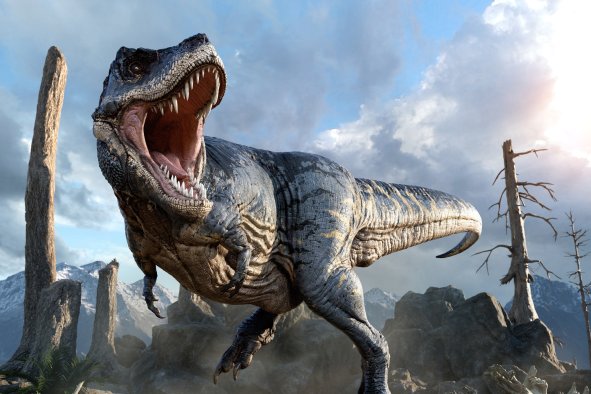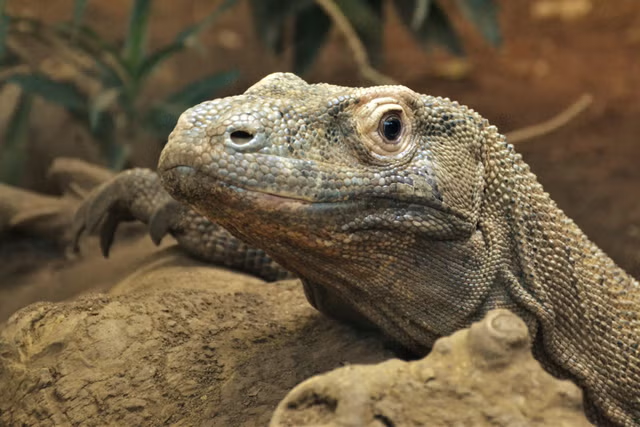A boiling hot geyser in Yellowstone National Park has suddenly exploded violently, sending hot water and debris flying into the air.
The "hydrothermal explosion" occurred at around 10 a.m. local time on Tuesday near the Black Diamond Pool in an area called the Biscuit Basin, a few miles northwest of the famous Old Faithful geyser.
The boardwalk was damaged by the explosion, with videos posted on social media showing the scale of the eruption and the aftermath, with lots of debris scattered across the area.
"At around 10 a.m. MST on July 23, 2024, a small hydrothermal explosion occurred in Yellowstone National Park in the Biscuit Basin thermal area, about 2.1 miles northwest of Old Faithful. Numerous videos of the event were recorded by visitors. The boardwalk was damaged, but there were no reports of injury. The explosion appears to have originated near Black Diamond Pool," Mike Poland, a scientist at the Yellowstone Volcano Observatory, wrote in a joint Yellowstone National Park and U.S. Geological Survey statement.
The cause was a hydrothermal explosion, which is a violent ejection of boiling water, steam and mud. Such explosions occur when superheated water, trapped in underground reservoirs, comes into contact with hot rock or magma. The intense heat rapidly converts water into steam, increasing pressure until it exceeds the strength of the overlying rock or soil and explodes out through the ground.
Hydrothermal explosions can range from small geyser-like eruptions to large events that create craters and throw rocks and debris over considerable distances, according to the USGS.
Smaller hydrothermal eruptions are fairly common in Yellowstone, with a minor explosion occurring in the Norris Geyser Basin on April 15 this year, and a similar explosion having been seen in Biscuit Basin in 2009.
The park has experienced several significant hydrothermal explosions in its history. Mary Bay on the edge of Yellowstone Lake was the site of one of the largest known hydrothermal explosions, which occurred approximately 13,800 years ago, creating a crater over 2 miles wide.
"Based on the occurrence of large hydrothermal explosion events over the past 16,000 years, an explosion large enough to create a 100-meter (328-foot) wide crater might be expected every few hundred years," the USGS said.
A video of this week's explosion, recorded by California real estate agent Vlada March, shows a huge grey pillar of steam and dust rising high into the air, followed by people on the boardwalk nearby running in the opposite direction as plumes of hot steam billowed out below and chunks of rock rained down to the ground. Another video uploaded by March showed the aftermath, with debris scattered around the boardwalk and surrounding area and steam rising from the ground.
Thankfully, hydrothermal explosions are distinct from volcanic eruptions, as they are primarily driven by the interaction of water and heat, rather than the movement of magma toward the surface.
"Monitoring data show no changes in the Yellowstone region. Today's explosion does not reflect activity within volcanic system, which remains at normal background levels of activity. Hydrothermal explosions like that of today are not a sign of impending volcanic eruptions, and they are not caused by magma rising towards the surface," Poland wrote in the statement.
While nobody was hurt in the explosion, the area has been briefly closed to the public.
"Biscuit Basin, including the parking lot and boardwalks, are temporary closed for visitor safety. The Grand Loop road remains open. Yellowstone National Park geologists are investigating the event," Poland said.
Do you have a tip on a science story that Newsweek should be covering? Do you have a question about Yellowstone? Let us know via science@newsweek.com.
Disclaimer: The copyright of this article belongs to the original author. Reposting this article is solely for the purpose of information dissemination and does not constitute any investment advice. If there is any infringement, please contact us immediately. We will make corrections or deletions as necessary. Thank you.



